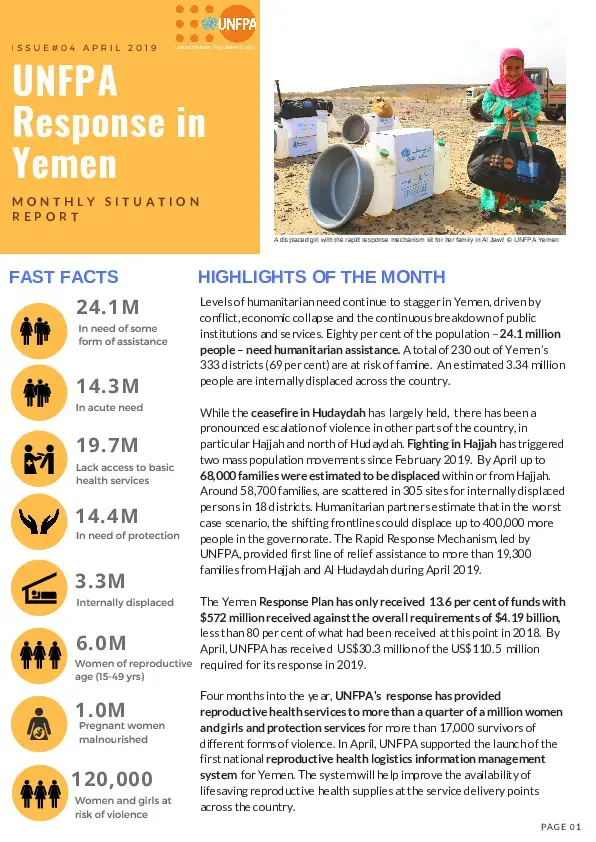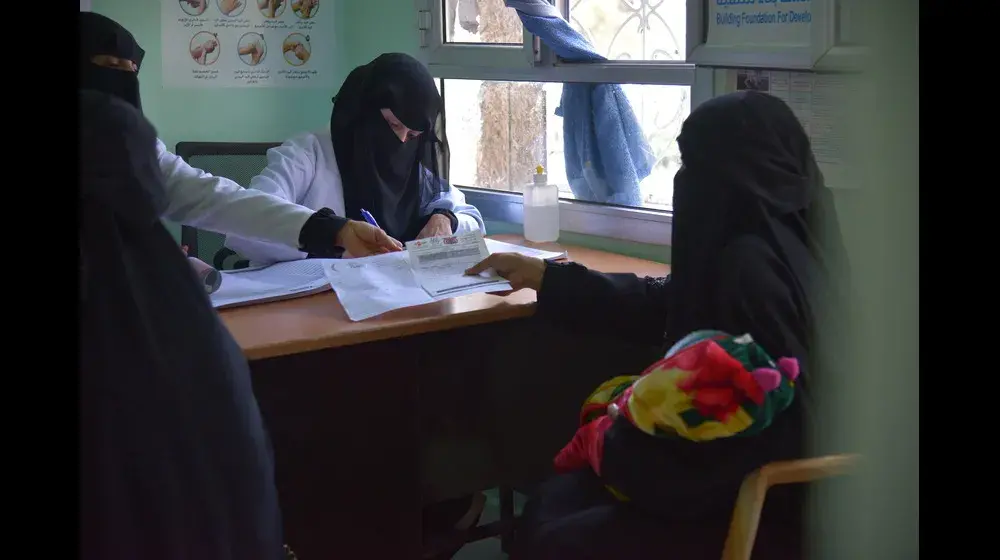Levels of humanitarian need continue to stagger in Yemen, driven by conflict, economic collapse and the continuous breakdown of public institutions and services. Eighty per cent of the population – 24.1 million people – need humanitarian assistance. A total of 230 out of Yemen’s 333 districts (69 per cent) are at risk of famine. An estimated 3.34 million people are internally displaced across the country.
While the ceasefire in Hudaydah has largely held, there has been a pronounced escalation of violence in other parts of the country, in particular Hajjah and north of Hudaydah. Fighting in Hajjah has triggered two mass population movements since February 2019. By April up to 68,000 families were estimated to be displaced within or from Hajjah. Around 58,700 families, are scattered in 305 sites for internally displaced persons in 18 districts. Humanitarian partners estimate that in the worst case scenario, the shifting frontlines could displace up to 400,000 more people in the governorate. The Rapid Response Mechanism, led by UNFPA, provided first line of relief assistance to more than 19,300 families from Hajjah and Al Hudaydah during April 2019.
The Yemen Response Plan has only received 13.6 per cent of funds with $572 million received against the overall requirements of $4.19 billion, less than 80 per cent of what had been received at this point in 2018. By April, UNFPA has received US$30.3 million of the US$110.5 million required for its response in 2019.
Four months into the year, UNFPA's response has provided reproductive health services to more than a quarter of a million women and girls and protection services for more than 17,000 survivors of different forms of violence. In April, UNFPA supported the launch of the first national reproductive health logistics information management system for Yemen. The system will help improve the availability of lifesaving reproductive health supplies at the service delivery points across the country.




